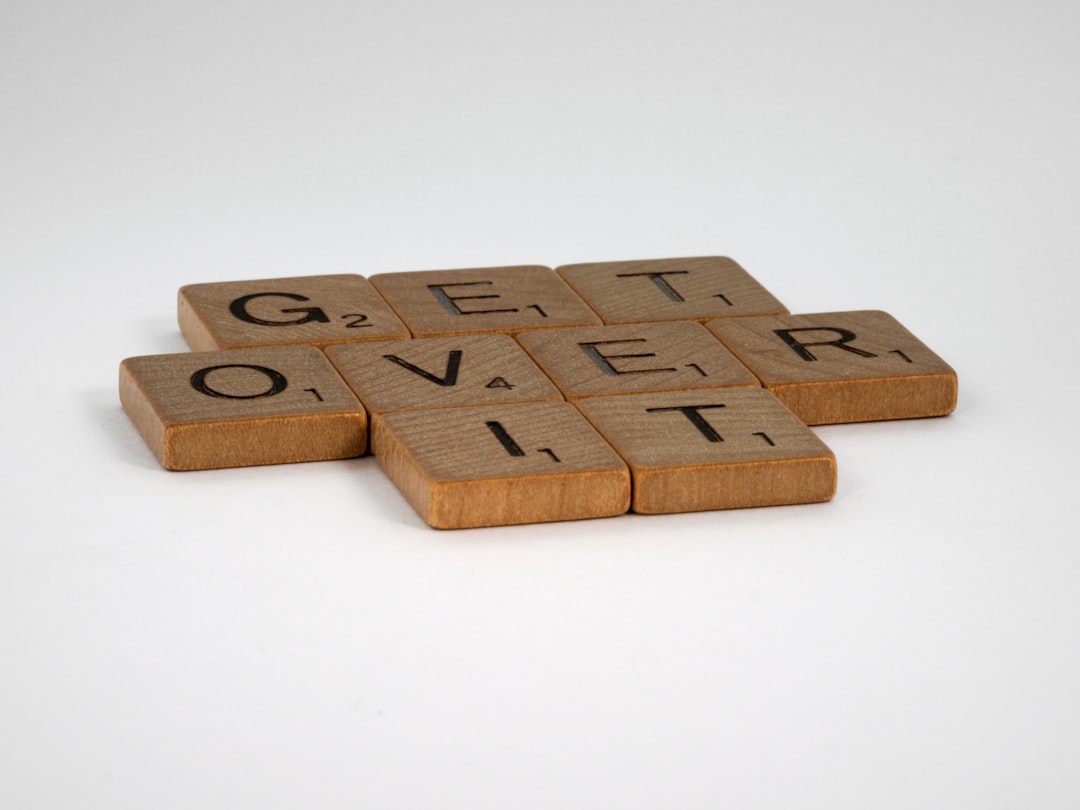

Engage prospects with a scan and streamline customer engagement with FREE QR code marketing tools by Sona – no strings attached!
Create a Free QR CodeFree consultation

No commitment

Engage prospects with a scan and streamline customer engagement with FREE QR code marketing tools by Sona – no strings attached!
Create a Free QR CodeFree consultation

No commitment
QR codes have evolved from marketing novelties to strategic assets that bridge offline engagement with actionable online outcomes. Health-related charities, faced with resource constraints and inefficient feedback processes, are discovering QR codes to be an accessible, high-impact solution for gathering donor and patient input without requiring app downloads or confusing forms, often powered by tools like Google Forms QR. As staff reach communities at clinics, events, and through direct mail, capturing immediate feedback has become more crucial than ever.
Traditional feedback collection methods, such as printed surveys, paper forms, or in-person interviews, are cumbersome and lead to missed opportunities. Many supporters only interact briefly with physical touchpoints, and when their insights go uncollected, it limits the charity's ability to refine programs or build lasting relationships. QR codes for nonprofits enable charities to collect feedback instantly at critical moments, cut processing costs, and respond quickly to emerging needs across disaster relief, healthcare education, and more.
With QR codes, every flyer, donation box, appointment card, or event booth becomes a feedback gateway, helping organizations understand who is engaged and why. This guide explores how health-related charities can use QR codes to gather richer feedback, connect with high-value audiences beyond form submissions, and leverage mobile-first insights to fulfill their mission.

QR codes provide a direct path for high-value stakeholders, including donors, patients, caregivers, and volunteers, to share their experiences at the exact moment it matters. Too often, charities miss actionable feedback because engagement happens offline and never makes it into digital systems that teams can analyze and act upon. Moving these analog interactions into digital workflows with QR codes helps capture insights while they are fresh, reduces operational friction, and ensures accountability in follow-up.
Start by identifying where analog processes are breaking down. Common examples include clipboard sign-in sheets that never get entered into the CRM, paper post-appointment surveys that patients forget to return, and event feedback boxes that produce unreadable or incomplete responses. Replacing them with QR-enabled experiences turns static touchpoints into live, measurable feedback channels.
Modern feedback platforms and QR tools make it possible for even resource-constrained charities to track every meaningful interaction, close feedback loops, and optimize experiences across all touchpoints. The result is faster learning, higher retention, and better service quality backed by real data.

Health-related charities work in environments where physical interactions dominate and time is limited. A donor who drops a gift at an event table, a patient who receives a discharge packet, or a caregiver who attends a health education session may not have the time or motivation to fill out paper forms or navigate complex websites. Without a simple, immediate pathway to share input or request help, valuable signals are lost. QR codes reduce this friction by turning any physical asset into a scannable gateway to a mobile-optimized experience.
By using QR codes, organizations create a low-friction bridge between real-world moments and digital insights. Teams can better understand sentiment, surface unmet needs, and identify advocates early. Over time, these small improvements compound into smarter programs, more efficient fundraising, and stronger community trust.
In health-related charities, common placements include appointment cards, discharge packets, informational brochures, volunteer badges, collection boxes, mobile clinic signage, and direct mailers. Each asset becomes an active listening post that helps your team respond with speed and clarity.

Choosing the right QR format and destination makes the difference between a casual scan and meaningful action. Health-related charities tend to see the strongest results when the destination aligns closely with the context of the scan. For instance, a donor who just made a gift needs a fast, two-question satisfaction form, not a deep-dive survey meant for program participants.
Two broad categories of QR codes are used most often: static and dynamic. Static codes are ideal for unchanging destinations like a general resource page. Dynamic codes are best for campaigns and feedback forms since they provide analytics, editability, and segmentation. With dynamic codes, you can refine content mid-campaign, split-test experiences, and route data into the right tools.
Dynamic QR platforms are especially helpful for health-related charities because content frequently changes as programs evolve. When guidance, providers, or contact points shift, you can update destinations in seconds without reprinting thousands of brochures or cards.
Growth hinges on recognizing who is engaging, where they engage, and what they need next. In many charities, engagement happens in fragmented ways that do not tie back to a CRM. Event attendees leave without a recorded interaction, clinic visitors are not segmented by service received, and direct mail recipients remain unknown. QR codes help you capture these moments and turn them into measurable growth.
Start by auditing your highest-traffic physical touchpoints. Look for locations where people are already attentive and motivated: check-out counters at fundraising events, clinic waiting rooms, telemedicine post-visit messages, or the back of appointment reminder cards. Then design QR-enabled experiences that are fast, relevant, and respectful of time and privacy using Sona QR’s non-profit strategies.
When you combine these placements with consistent tagging and analytics, you gain a richer picture of audience behavior. That visibility uncovers new avenues for stewardship, advocacy, and recurring support.

Health-related charities encounter recurring friction in their feedback loops: paper forms that never return, long surveys that deter completion, and anonymous traffic that prevents targeted follow-up. Strategic QR placement can transform these challenges into measurable improvements across donor relations, patient care, and community outreach.
Start with a handful of high-impact use cases that map to key moments in your programs. Keep each experience short, mobile-friendly, and explicit about the value of participation. The goal is not only to collect feedback but also to demonstrate that you listen and respond.
Each use case strengthens your ability to listen, learn, and act without overburdening constituents. Over time, the consistent use of QR-enabled feedback builds trust and demonstrates accountability.
Every scan is a signal. It reveals context, intent, and readiness for the next step. When you deploy multiple QR codes across programs, you transform a broad, anonymous audience into distinct segments that can be nurtured with relevance. This makes retargeting smarter and follow-ups more respectful. For step-by-step tactics, see Sona’s Playbook Intent-Driven Retargeting.
Segmentation starts with labeling codes by journey stage and channel. Assign unique codes to awareness placements, such as posters or PSAs, and different codes to consideration or conversion placements, such as event tables or discharge packets. Then enrich these scans with metadata, including location, program type, and time of day.
For health-related charities, useful audience distinctions include first-time donors versus recurring donors, recent patients versus caregivers, in-person clinic visitors versus telemedicine participants, and volunteers by program type. When each group receives communications that match their context, engagement rises and unsubscribes fall.
QR codes unite your physical outreach with your digital strategy. They provide the connective tissue across flyers, events, direct mail, educational programs, and clinical operations. With each scan mapped to a campaign and audience, you get a single, coherent view of engagement instead of scattered signals.
Integration begins by standardizing how you create, tag, and analyze QR codes across teams. Use a Sona QR platform, adopt naming conventions, and align on goals for every placement. Then ensure your landing experiences and follow-ups are consistent in tone, accessibility, and speed to value.
Start creating QR codes for free: Start creating QR codes for free.
Launching a QR-driven feedback campaign is straightforward when you follow a structured plan. Define your goals, match them to the right formats and placements, and ensure data flows to the systems that power your follow-up. The steps below provide a practical framework that any health-related charity can adapt.
Consider starting with a single high-impact use case, such as post-visit patient feedback or post-donation sentiment. Pilot in one location or event, refine based on data, then expand across programs. Small iterations produce rapid learning while minimizing risk.
With each iteration, your QR program becomes more precise and more impactful. Keep learning, keep testing, and align every step with mission outcomes.
Health-related charities often struggle to connect frontline engagement to measurable outcomes. QR codes, paired with robust analytics, change that equation by revealing who scanned, when they scanned, what they did next, and how those actions contributed to program or fundraising goals. This visibility informs investments, improves accountability, and demonstrates impact to stakeholders.
The key is to go beyond counting scans. Link each scan to a user-friendly experience, measure conversion to form completion or donation, and attribute results to the right channels. Build dashboards that show performance by program, event, and audience so teams can adjust quickly.
Platforms like Sona QR and Sona.com make this end-to-end visibility straightforward. Sona QR captures real-world engagement with detailed scan analytics and native integrations. Sona.com extends those insights with multi-touch attribution and identity resolution that link anonymous scans to known supporters where permitted. Together they provide a clear line of sight from scan to impact, which elevates QR codes from convenience to core strategy.
Sustained success with QR campaigns comes from disciplined iteration and a culture of curiosity. Teams that review performance regularly, train staff to promote scanning, and try creative placements see consistent gains in feedback volume and quality. They also move faster to address issues that might otherwise linger unnoticed.
Create a playbook that outlines how your organization designs, deploys, and measures QR codes. Include naming conventions, placement guidelines, accessibility standards, and a response plan for sensitive feedback. Then schedule recurring reviews to compare performance across programs and share learnings.
For more nonprofit-focused tactics, explore fundraising QR codes and broader nonprofit QR strategies.

QR innovation thrives when organizations get creative about where they place codes and how they frame the ask. The best examples respect the participant’s time, protect privacy, and deliver immediate value for scanning. They also ensure that each response reaches the team that can act on it.
Consider what would make scanning feel useful in your context. A promise of a brief, two-question survey, the offer of relevant resources, or a thank-you message acknowledging the participant’s role can make a meaningful difference in response rates.
Use these examples as inspiration, then adapt them to your programs and audiences. The best placements are the ones that meet people where they are and respect the realities of their day.
A few practical principles consistently separate high-performing QR initiatives from the rest. They start with empathy for the scanner, continue with attention to accessibility and motivation, and end with a relentless focus on closing the loop so participants feel heard.
When you design with these principles, scan rates rise, feedback quality improves, and staff time is used more effectively. The cumulative effect is a more responsive organization that can demonstrate impact with confidence.
Expert tips for maximizing impact:
Watch for common pitfalls:
QR codes have become an essential tool for health-related charities, transforming physical interactions into measurable, lasting relationships. By using scan data to reveal who is engaged and why, organizations can overcome the limits of traditional feedback collection and finally bring high-value prospects, feedback, and opportunities into focus.
In an era where every supporter’s voice counts, integrating QR codes into daily operations allows charities to measure, iterate, and grow with confidence. The end result is aligned services, stronger retention, and the ability to prove real-world impact, one scan at a time. Start creating QR codes for free.
QR codes have transformed health-related charities from traditional feedback methods into dynamic, measurable engagement tools. Whether it’s collecting meaningful donor insights, enhancing supporter experiences, or streamlining volunteer feedback, they replace cumbersome paper surveys with instant, mobile-friendly actions that capture real-time data to elevate every interaction into a powerful opportunity for growth and impact.
Imagine knowing exactly which outreach efforts inspire the most heartfelt responses—and being able to refine your campaigns instantly based on that insight. With Sona QR, you can create dynamic, trackable QR codes in seconds, update feedback campaigns without reprinting materials, and connect every scan directly to improved donor engagement and program outcomes. No wasted effort, no missed opportunities—just smarter, more effective charity work.
Start for free with Sona QR today and turn every scan into vital feedback, deeper connections, and meaningful change.
You can donate by scanning QR codes placed on donation boxes, event tables, or printed materials that direct you to mobile-optimized donation pages or confirmation surveys.
QR codes reduce friction by enabling instant, app-free engagement, provide real-time tracking and attribution, update content without reprinting, and help charities collect timely feedback to improve donor retention and program effectiveness.
QR codes placed on flyers, posters, street signs, and educational materials connect physical outreach to online resources, enabling instant feedback, resource access, and audience segmentation that raise awareness and support.
Best practices include designing mobile-first and accessible codes with clear calls to action, using dynamic QR codes for tracking and content updates, matching codes to specific audience moments, piloting before scaling, and automating follow-ups to close the feedback loop.
They use QR codes integrated with CRM and analytics platforms to capture detailed scan data, segment audiences by role and intent, automate personalized follow-ups, and analyze engagement to optimize programs and fundraising campaigns.
Use Sona QR's trackable codes to improve customer acquisition and engagement today.
Create Your FREE Trackable QR Code in SecondsJoin results-focused teams combining Sona Platform automation with advanced Google Ads strategies to scale lead generation

Connect your existing CRM

Free Account Enrichment

No setup fees
No commitment required

Free consultation

Get a custom Google Ads roadmap for your business






Launch campaigns that generate qualified leads in 30 days or less.
